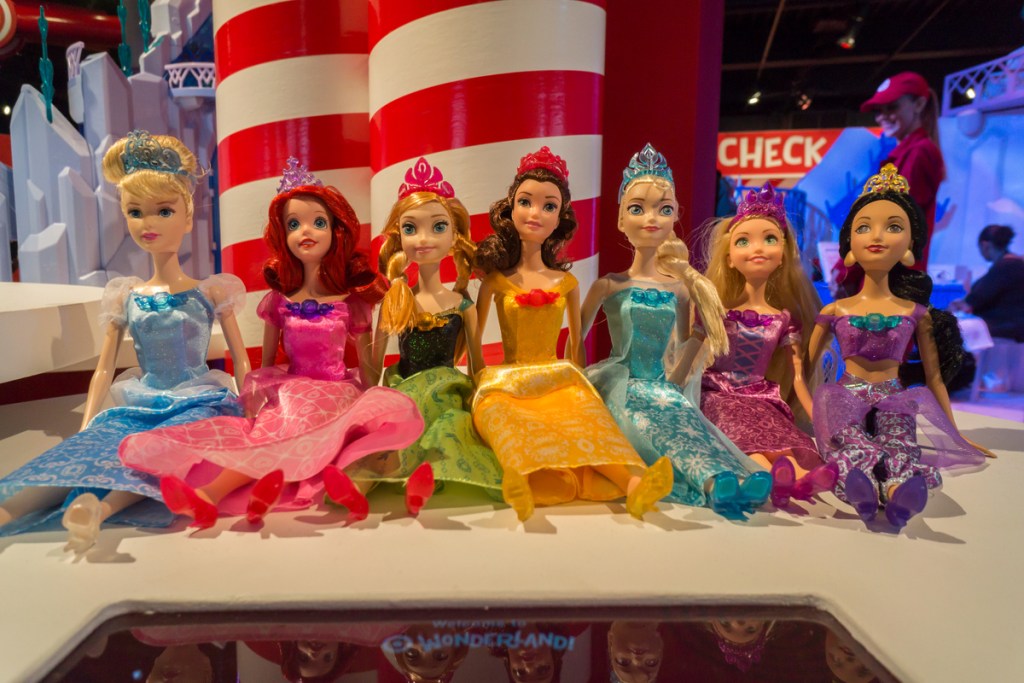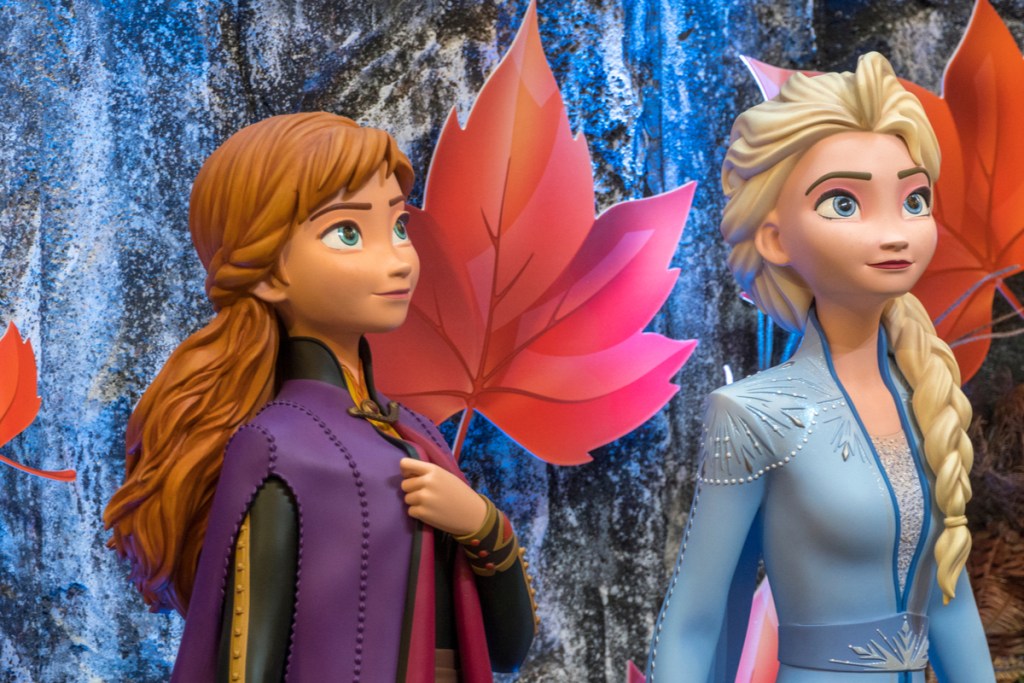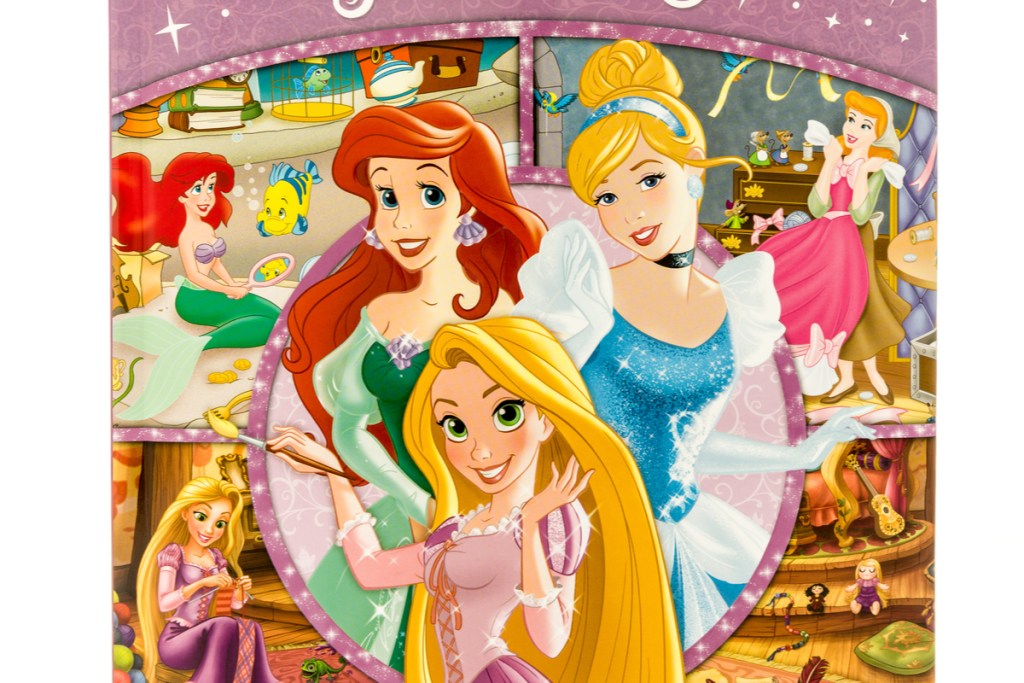“I am a princess. All girls are.” –A Little Princess, Frances Hodgson Burnett (1905)
“Someday my prince will come.” –Snow White and the Seven Dwarfs (1937)
“Raya, Princess of Heart, my daughter, you are now a Guardian of the Dragon Gem.” –Raya and the Last Dragon (2021)
For generations of children, Disney princesses have been a part of their world.
Over the course of more than 80 years, Disney, the most trusted name in family entertainment, has presented tales as old as time in which these female characters are at the center of the story. That’s good, right? It depends. Recent studies suggest maybe yes, maybe no.
One thing is for certain, from “Snow White and the Seven Dwarfs” to “Raya and the Last Dragon,” released this year, these popular films afford parents the opportunity to engage their children in constructive discussions about gender stereotypes and how Disney princess characters have evolved over the decades, from Snow White waiting for her prince to come to an empowered Moana demanding to Maui, hero of men, “I am Moana of Motunui. You will board my boat.”
A new study from Brigham Young University (BYU) has found that children who engaged with so-called “princess culture” were “more likely to later hold progressive views about women.”
The study, which followed 307 Utah children (and their parents) over a five-year period, was an extension of BYU study conducted in 2016, which concluded that Disney princess culture had a negative impact on girls because it propagated gender and body image stereotypes.
Sarah Coyne, BYU professor and associate director of the School for Family Life, the lead author of the study, told Newfolks.com that she was inspired to undertake the original study after meeting Peggy Orenstein, author of Cinderella Ate My Daughter at a gender development conference in San Francisco. “She was talking about how women’s problems with their bodies and being sexualized and subjectification may stem from early princess culture,” Coyne said. “At the time, my daughter was 3 years old and fully into Disney princesses. She dressed up and loved the movies. I thought, ‘I’m destroying my daughter.’ Peggy said there had not been a lot of research on this topic. I do research on media and children and I thought, “It should be a fun study.”
“Fun” may be a relative term. Published in the journal, Child Development, the study, “Pretty as a Princess: Longitudinal Effects of Engagement with Disney Princesses on Gender Stereotypes, Body Esteem and Prosocial Behavior in Children,” was widely picked up in the media, and Coyne reported receiving a plethora of hate mail.
Is princess culture a positive or negative influence?
Among that original study’s findings was that preschool girls, especially, who were immersed in princess culture behaved in stereotypically feminine behavior. “That could be negative if it undermines their confidence and limits their behavior regarding college, having a career, or taking risks,” Coyne said.
The new study, which revisited the children from the 2016 study, offers a more positive long-term outlook that reflects how Disney has taken pains to portray princesses who were not content to gaze into a wishing well and sing of their wish that the one she’ll love will find her. It found long-term positive effects of princess culture. Teen girls in the study were more likely to consider that educational and career opportunities were equally important for men and women.
“I thought I was done with princesses,” Coyne said with a laugh. “But one finding (in the original study) grated on me. We found that princess culture had no effect on body image for girls. I thought that can’t be right. I decided to go back again and measure subjects on the cusp of puberty when body image concerns really start to ramp up.”
Surprisingly, the research found that children engaged with princess culture developed a positive body image, a reflection perhaps of Disney presenting a wider range of body types than the traditional thinly-drawn characters.
As for boys who were exposed to Disney princess films and culture, the study finds that they were less likely to engage in traits associated with toxic masculinity. They are more likely to express their feelings and emotions in constructive ways.

The birth of princess culture
Princess culture was not always a thing. In the days before home video, the Disney company shrewdly marketed their animated classics as special events. They were re-released in theaters roughly every seven years for limited runs. This practice was continued in the home video era, when films such as “Pinocchio,” “One Hundred and One Dalmatians,” and “Bambi” were briefly introduced on home video and then pulled from the market for purchase. Subsequent re-releases introduced them to a new generation.
In 1995, Walt Disney Home Video launched two video series, “Jasmine’s Enchanted Tales,” featuring the princess from “Aladdin,” and “Ariel’s Songs and Stories,” featuring the heroine of “The Little Mermaid.” It was the first time the studio marketed characters apart from the release of a film. It kept these popular characters alive in the hearts and minds of consumers.
Disney went all-in on princess branding in 2000. Andy Mooney, who came to Disney via Nike, told The New York Times in 2006 that attending a “Disney on Ice” show inspired him to tap a vast young audience of princess emulators. “Standing in line in the arena,” he said, “I was surrounded by little girls dressed head to toe as princesses. They weren’t even Disney products. They were generic princess products they’d appended to a Halloween costume. And the light bulb went off.”
There are 12 certified princesses in the Disney line. In addition to the videos, other princess products include licensed toys, dolls, clothing, and other products. It has become a multi-billion-dollar business.
That’s a marketing onslaught that parents may find daunting, but as Disney princesses have evolved into stronger and more empowered characters, especially in the live-action remakes of the animated classics, it is important for parents to engage their children in a discussion of gender stereotypes, says Dr. Arthur Lavin, a pediatrician with a 30-year practice and the Chair of the American Academy of Pediatrics Committee on Psychosocial Aspects of Child and Family Health.
“We are living through a time in which the concept of gender is changing quite substantially,” he said. It’s great to be able to talk to kids about what their world is like and the challenges they face as they seek out who they are.”
The princesses they are a’ changin’
The emancipation of women over the last century from previously prescribed rigid roles is one of the greatest triumphs of the modern era,” Lavin said. “There was a time when you were male or female, and females were subservient to males. There was not a lot of room for imagination in that setting. People have been chafing against those structures for a long time. Let’s talk about women being equal in their humanity, prospects, and power, and their ability to lead. And if women don’t have to be subservient to men for their living and can be a fully human part of humanity, then maybe each person has the ability to rethink what their gender identification is. It requires everyone to put forth their unique talents to make them what they are. There is not one way to be a girl and not one way to be a boy.”

One way to facilitate this conversation, Lavin said, is to have a double-feature movie night. Show one of the first-generation Disney princess films, such as “Cinderella” along with “Moana” or “Frozen.” “What better way to present both character models,” he said. “Some will like the old way, some the new way. It is wonderful to hear from your children how they feel.”
Coyne suggests several prompts for parents to talk to their children about gender stereotypes in Disney princess films. One is how princesses have changed over time. “Modern-day princess characters are very powerful, strong, and independent,” she observed. “We don’t see the submissive princess that relies on the man to wake her up. If girls and boys are seeing princesses like this, will they believe that men and women are equal and that women should have just as many opportunities as men?”
Another ripe topic for discussion is how the portrayal of men has also shifted in Disney princess films. While Gaston in “Beauty and the Beast” is a clear example of toxic masculinity, a character such as Kristoff in “Frozen,” who sings about his feelings and is “more nuanced than the traditional characteristics of a Disney leading man,” Coyne said.
In light of new complexity in today’s princess characters, Coyne recommends parents focus on the characteristics that make these women strong and independent. “When we did the original study, we asked the kids in our sample who is your favorite princess and why, and the two most common reasons were appearance and merchandise,” Coyne said. “Only one participant said she liked Mulan because she saved China.”
Other discussion-starting topics include talking about body size and shape. Why aren’t there larger-size princesses? Why is representation regarding size, shape, and race important? “I would like the parents to use the princesses as an opportunity to teach what femininity looks like,” Coyne said. “If you compare Anna vs Elsa in “Frozen,” they are both princesses, but very different. That’s a wonderful conversation to have.”
But as with any conversation parents have with their children, Lavin emphasized that the most important thing is “for parents to make sure their children know that their parents are good listeners and that they are interested in what they are thinking.”



